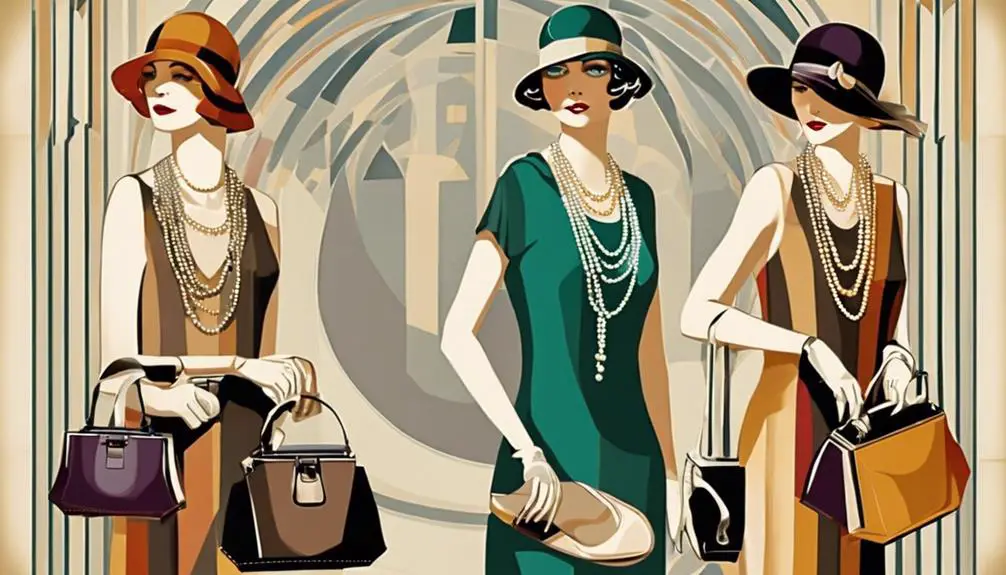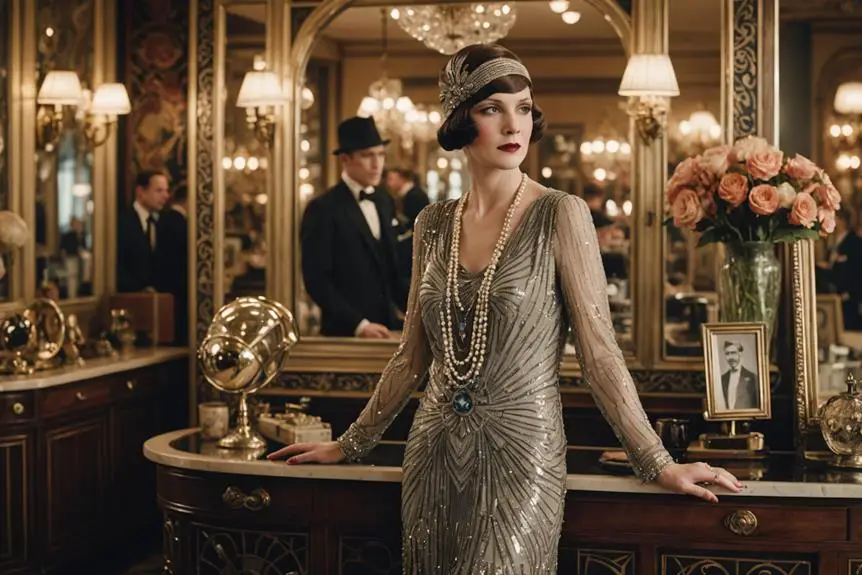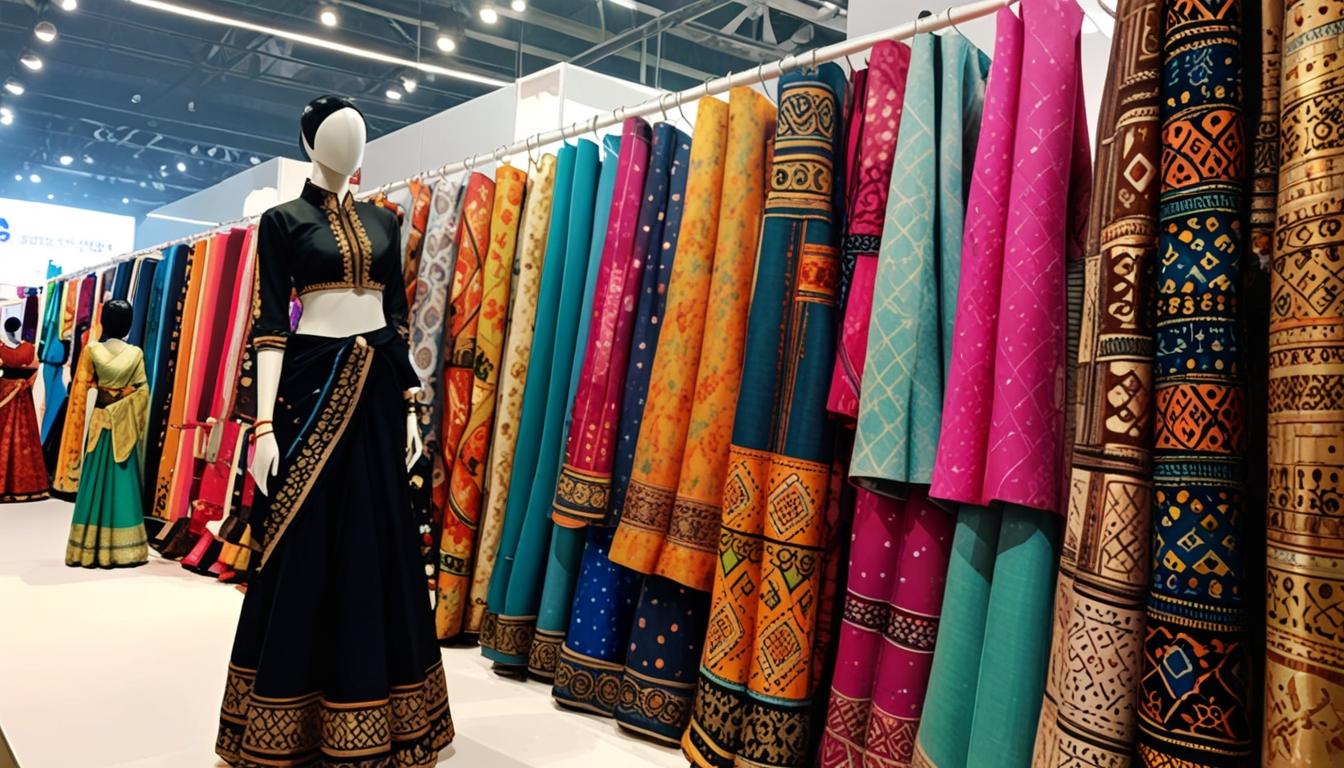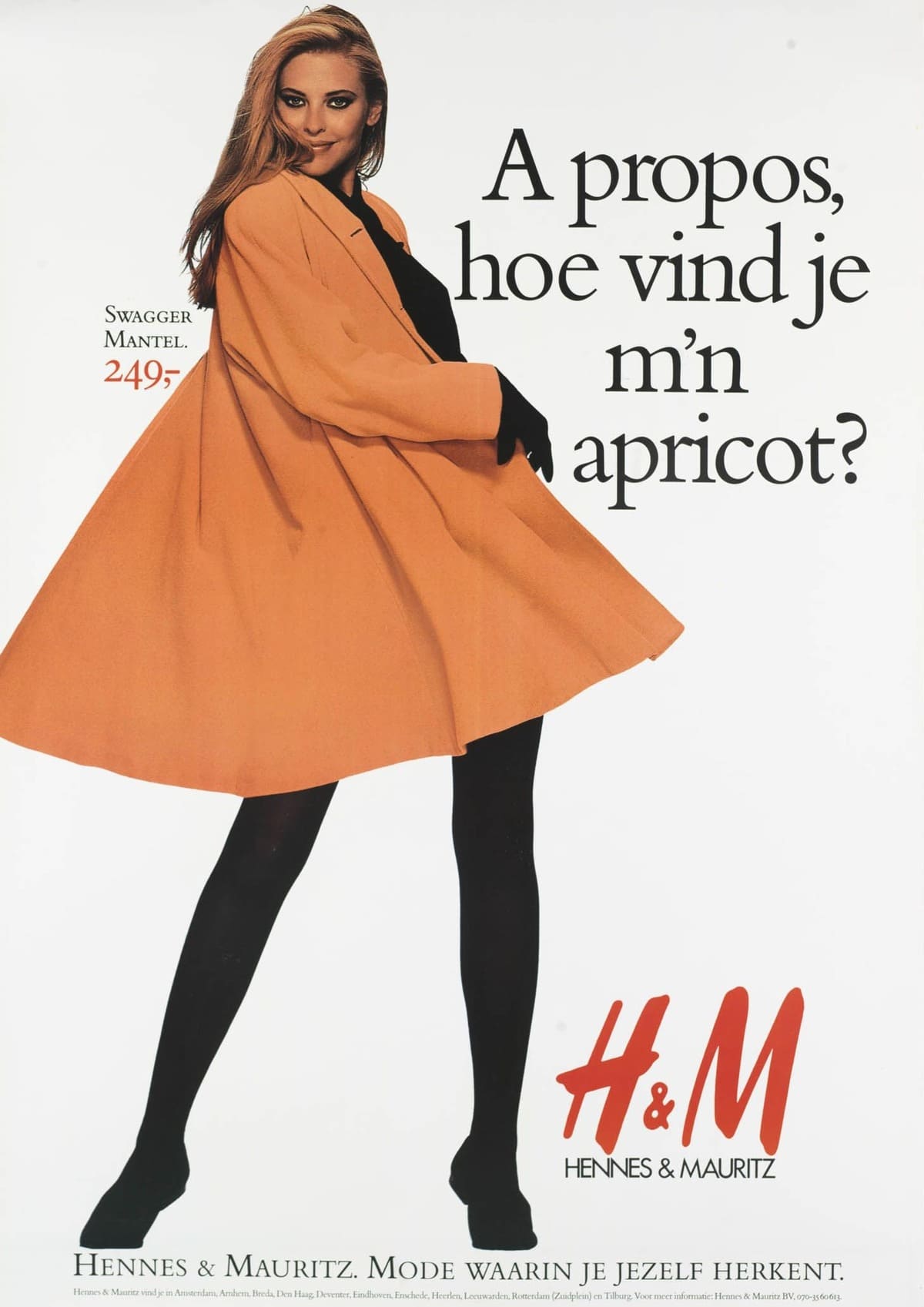In the late 1920s, fashion brands like Coco Chanel, Jeanne Lanvin, and Paul Poiret revolutionized style with bold designs and luxurious fabrics. Chanel introduced the Little Black Dress, while Lanvin dazzled with elegant mother-daughter outfits and comfy chemise dresses. Poiret blurring gender lines with neoclassic styles made comfort fashionable for men. Accessories like cloche hats and pearl necklaces complemented these looks, adding flair to both men's and women's attire. This period was more than just trends; it was a cultural shift towards independence and creativity. Stick around, and you'll discover how these iconic moments still influence today's fashion!
Iconic Women's Fashion Brands
In the late 1920s, women's fashion brands emerged as powerful influencers, shaping the styles we still admire today. This period, known as the Roaring Twenties, saw fashion designers like Coco Chanel, Jeanne Lanvin, Elsa Schiaparelli, Madeleine Vionnet, and Jean Patou redefine women's clothing, making it more practical and stylish.
Coco Chanel revolutionized women's fashion with her introduction of the Little Black Dress in 1926, a versatile piece that became essential for both day and evening wear.
Meanwhile, Jeanne Lanvin captured attention with her elegant mother-daughter ensembles and the popular empire-waist chemise dresses, blending comfort with high fashion.
Elsa Schiaparelli stood out with her surrealist designs and bold colors, even making visible zippers a fashionable statement. Her creativity pushed the boundaries of what women could wear.
Madeleine Vionnet, celebrated for her draping techniques and bias-cut dresses, emphasized the female form, influencing modern fashion design considerably.
Jean Patou focused on sportswear, creating stylish yet functional garments that catered to the active lifestyles of women during this dynamic decade. His designs reflected the freedom and energy of the flapper style that defined the era.
These iconic brands helped women express themselves through fashion, breaking away from traditional constraints. Their contributions laid the foundation for contemporary women's fashion, ensuring that the styles from the late 1920s remain relevant and admired in today's wardrobes.
Influential Men's Fashion Designers
The late 1920s brought substantial changes to men's fashion, paralleling the women's styles that were gaining momentum. One of the most notable influences during this time was Edward VIII, who championed the two-piece suit. This shift away from traditional three-piece designs marked a move towards a more relaxed and modern style, making men's suits more accessible and appealing to the contemporary man.
The era also saw a growing interest in branding and logos, similar to how vintage Ralph Lauren items are identified by their production origins and distinct characteristics. Tailors from Savile Row in London were renowned for their bespoke craftsmanship, creating suits with beautiful fabrics like pinstripes and tweeds. These tailors catered to an elite clientele, ensuring that every suit showcased individuality and sophistication.
Meanwhile, influential designer Paul Poiret was redefining men's fashion with his neoclassic and oriental-inspired designs. His structured cuts and innovative ideas, like the introduction of modern bras, began to blur the lines of traditional gendered fashion.
Jean Patou also made waves in the late 1920s by revolutionizing men's sportswear. His stylish tennis skirts and designer ties contributed considerably to the ready-to-wear clothing movement, making fashionable attire more accessible to the average man.
Accessories played a vital role as well; bowler hats and fedoras became essential elements of men's fashion, cementing their status as symbols of the Roaring Twenties.
Together, these designers and trends transformed men's fashion, creating a vibrant landscape that reflected the cultural shifts of the era. Your style choices from this period can still inspire modern fashion today!
Notable Accessories and Footwear

As women's fashion evolved in the late 1920s, accessories and footwear became crucial elements that defined personal style. This was the era when cloche hats emerged as an iconic accessory, typically worn low on the forehead to perfectly complement bobbed hairstyles. These hats weren't just practical; they added an air of sophistication to any outfit.
Footwear trends also saw a shift during this time. Closed-toe shoes like Mary Janes and T-straps gained popularity, featuring modest heels that aligned beautifully with the casual elegance of the decade. These shoes were perfect for both day-to-day wear and evening outings, reflecting a more relaxed yet stylish approach to fashion.
Accessories played a significant role in completing a look. Long strands of pearl necklaces and feather boas added a touch of glamour, whether you were dressing for a lunch date or a night out dancing. Rolled-down stockings became a fashionable statement, often paired with shorter hemlines, showcasing the flapper trend that dominated the scene.
Moreover, decorative brooches and headbands adorned with gemstones or feathers allowed women to express their individuality. Each piece was a reflection of personal style, making the late 1920s a vibrant time for fashion enthusiasts.
With these accessories and footwear, you could effortlessly embrace the spirit of the time, showcasing your flair while enjoying the freedom that came with a new era of style.
Impact of Cultural Movements
Fashion in the late 1920s wasn't just about accessories and footwear; it was deeply intertwined with the cultural movements of the time. The Harlem Renaissance played a significant role in shaping fashion trends, introducing vibrant colors and styles that reflected the cultural pride of the African American community. This influence seeped into mainstream fashion, encouraging brands to embrace bold designs.
The Jazz Age brought the flapper style to the forefront, revolutionizing women's fashion. Dresses featured shorter hemlines and dazzling embellishments, perfect for dancing the Charleston at lively nightlife venues. Designers like Coco Chanel and Jean Patou reimagined women's wear, prioritizing comfort and freedom of movement. This shift allowed women to express themselves more freely than ever before.
Silent film stars like Clara Bow and Louise Brooks also left a mark on fashion. Their iconic bobbed hairstyles and glamorous evening wear became highly sought after, prompting fashion brands to quickly adapt to these trends. Cultural events like Broadway shows and Cotton Club performances fueled the desire for stylish attire that matched the excitement of the era.
In this vibrant atmosphere, women were no longer confined to traditional roles; instead, they embraced fashion that symbolized their newfound independence.
The late 1920s was a time when fashion became a powerful expression of identity and creativity, allowing you to celebrate life in all its colorful glory. So, whether you were sporting a flapper dress or a chic bob, you were part of a cultural movement that changed the landscape of fashion forever.
Legacy of 1920s Fashion Brands

If you look at today's fashion landscape, you can trace many influences back to the groundbreaking brands of the late 1920s. The iconic Chanel, for instance, introduced the revolutionary Little Black Dress in 1926, forever changing how women viewed black clothing. No longer just for mourning, black became a staple in every fashionable woman's wardrobe.
Elsa Schiaparelli also left her mark with bold colors and artistic designs, particularly the wrap dress, which redefined femininity. Meanwhile, Jeanne Lanvin's luxurious empire-waist chemise dresses reflected the relaxed silhouettes that defined 1920s fashion, making women feel both elegant and comfortable.
Jean Patou's contributions included the popularization of ready-to-wear clothing and stylish sportswear, catering to the active lifestyles of modern women. This shift toward practicality didn't sacrifice style; instead, it made fashion accessible and enjoyable for everyone.
The legacy of these 1920s fashion brands is evident today. Designers continually draw inspiration from the revolutionary designs and cultural shifts of the Roaring Twenties. You can see echoes of that era in contemporary collections, from the sleek lines of the Little Black Dress to vibrant, bold patterns reminiscent of Schiaparelli.
As you explore your wardrobe, remember that many of the styles you love owe their origins to these pioneering brands. They not only shaped the fashion of their time but also laid the groundwork for the trends we embrace today, proving that great design truly stands the test of time.





Very good post! We are linking to this great article on our site.
Keeep up the good writing.